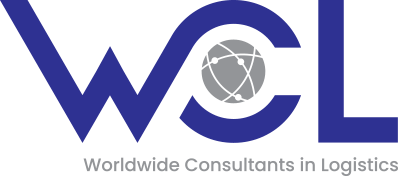Cross-border M&A transactions offer enormous potential for companies looking to expand their international presence – but they also bring complex challenges. In our latest blog, Martin Sieg, M&A expert at WCL, highlights the key success factors such as cultural integration and regulatory requirements. A must-read for anyone interested in strategic growth and international synergies!
Cross-border mergers and acquisitions (M&A) are a key strategy for companies seeking to expand globally and strengthen their market position. These transactions offer numerous opportunities but also present challenges that must be addressed to achieve success.
Cultural Integration as a Success Factor
Cultural integration is a crucial factor in cross-border M&A. Different corporate and national cultures can lead to frictions that threaten the success of a merger or acquisition. A well-known example is the merger between Daimler-Benz and Chrysler in the 1990s, where cultural differences led to significant tensions, ultimately causing the merger to fail. To overcome such challenges, it is important to take early measures for cultural integration. This can be achieved through training, joint workshops, and involving leadership from both sides in the integration processes.
An example from the logistics industry is FedEx’s acquisition of TNT Express in 2016. In this case, not only cultural differences were at the forefront, but also the challenge of efficiently integrating two different logistics networks. Through targeted measures to bridge cultural gaps and harmonize business processes, FedEx was able to leverage synergies optimally and significantly strengthen its presence in Europe.
Legal and Regulatory Framework
Another critical aspect of cross-border M&A is the legal and regulatory requirements, which can vary significantly from country to country. Companies must inform themselves early about the legal frameworks in the target countries and ensure that they comply with all relevant regulations. An example is the acquisition of the British company ARM by the American chip manufacturer NVIDIA. The transaction faced significant opposition from the British government and European regulatory authorities, ultimately leading to the deal being called off. Such cases highlight the importance of carefully examining regulatory requirements and adjusting the transaction structure if necessary.
In the logistics industry, the acquisition of the Swiss logistics giant Panalpina by the Danish company DSV in 2019 serves as an example. The acquisition required a thorough review of regulatory requirements across multiple jurisdictions, including antitrust approvals in the EU, the US, and Asia. Despite these challenges, the transaction was successfully completed, making DSV one of the largest logistics providers worldwide.
Synergy Potentials and Strategic Alignment
Despite the challenges, cross-border M&A offers significant opportunities, especially when it comes to synergies and strategic alignment. By combining resources and expertise, companies can enhance their innovation capacity and strengthen their market position. An example of this is General Electric’s acquisition of the French energy company Alstom in 2015. By pooling their competencies in the field of power generation and distribution, both companies were able to significantly improve their competitive position in a rapidly changing market.
A significant example in the logistics industry is the merger of UPS and Coyote Logistics in 2015. This transaction enabled UPS to expand its presence in the rapidly growing on-demand transport solutions market and strengthen its strategic focus on technological innovations. The acquisition of Coyote, one of the leading providers in third-party logistics (3PL), allowed UPS to significantly enhance its efficiency through improved network capacities and optimized supply chains.
Responsibility and Sustainability in Emerging Markets
A particularly relevant example of cross-border M&A is the expansion into emerging markets, including those in Africa. Companies operating in such regions must not only understand the economic and regulatory conditions but also take special responsibility for their employees and local communities. Many international corporations expanding into African countries place great emphasis on integrating social and environmental responsibility into their business strategies.
A concrete example from the logistics industry is DHL’s expansion into various African countries. In these markets, DHL not only invested in logistical infrastructure but also launched initiatives to improve local living conditions, such as vocational training programs and the promotion of local supply chains. Such measures not only contribute to economic development but also enhance the social acceptance and trust of local communities in international investors.
Conclusion
Cross-border M&A offers companies a wealth of opportunities, whether in established markets or emerging regions. The key to success lies in careful planning and execution, encompassing cultural integration, legal compliance, and responsible corporate governance. Companies that incorporate these aspects into their strategy can benefit financially in the long term and create sustainable value that goes beyond mere economic success. The willingness to take responsibility and invest in the well-being of employees and communities is not only ethically imperative but also a prerequisite for sustainable business success in global markets.
In the logistics industry, successful cross-border M&A can not only lead to the expansion and optimization of global networks but also create added value for all stakeholders, including the local communities where these companies operate.

